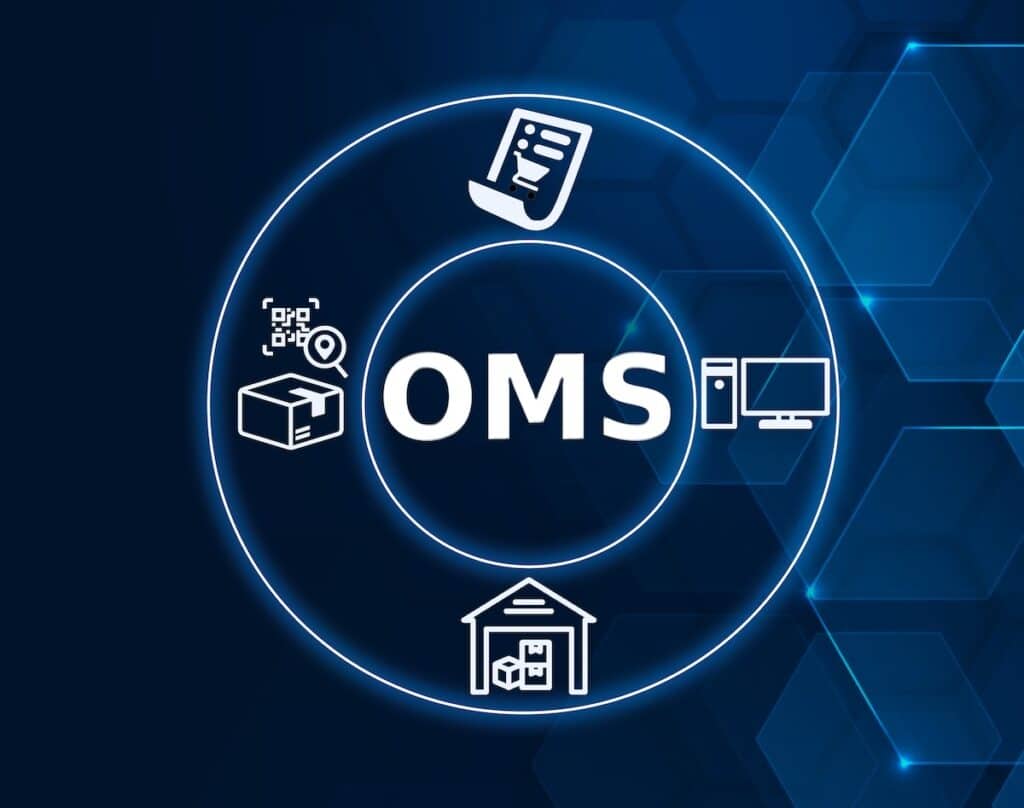In the fast-paced and intricate world of logistics, the challenges you face daily are not just about moving products from point A to point B. It’s about managing a complex network of orders, customer expectations, and ever-changing market dynamics. This is where the role of an Order Management System (OMS) becomes not just beneficial, but essential.
As industry professionals, we recognize that the right OMS can transform your logistical operations from a challenge into a competitive advantage. Let’s explore how advanced order management system software can be the anchor of efficiency in your logistics strategy.
Understanding the Role of Order Management Systems (OMS)
Imagine a tool that not only tracks every order but also gives you a comprehensive view of your entire supply chain. That’s the power of an OMS. It’s not just software; it’s your command center for managing orders, inventory, customer interactions, and even billing across every sales channel. In a world where speed and accuracy are paramount, an OMS isn’t just helpful; it’s critical for staying ahead. Whether you’re a small business grappling with growth or a large enterprise managing complex supply chains, an OMS adapts to your needs, ensuring you’re always on top of your game.
The Importance of OMS in Your Logistics Strategy
As a logistics professional, your day-to-day challenges are unique. You’re balancing the need for accurate order fulfillment with the demands of inventory management and customer satisfaction. An OMS steps in as your ally, offering solutions tailored to these challenges. It streamlines your processes, automates routine tasks, and provides real-time insights, allowing you to focus on strategic decision-making rather than getting bogged down in operational details.
Key Functionalities of Effective Order Management System Software
Navigating through the complexities of order management can be daunting. An effective OMS simplifies the entire order management process by offering key functionalities that are essential for modern logistics operations. Let’s dive into how these features can revolutionize the way you handle orders.
Order Tracking:
Imagine being able to pinpoint exactly where each order is at any moment. That’s the power of real-time order tracking in an OMS. It’s not just about keeping tabs on shipments; it’s about giving you and your customers the peace of mind that comes from knowing exactly what’s happening at every stage. This transparency isn’t just a feature; it’s a trust-builder, ensuring that both you and your customers are always in the loop.
Inventory Management:
Think of your inventory as the lifeblood of your business. A top-notch OMS doesn’t just monitor it; it optimizes it. By keeping your inventory levels in perfect balance, you avoid the pitfalls of overstocking or stockouts. This isn’t just about numbers; it’s about smart inventory control that keeps your business agile and responsive to market demands.
Order Fulfillment:
The journey from an order being placed to it landing in your customer’s hands should be seamless. An OMS streamlines the picking, packing, and shipping processes, cutting through the complexity to route orders with efficiency and accuracy. It’s about transforming a potentially tangled process into a smooth, error-free operation that delights your customers every time. Regardless of being peak season or off-peak, an OMS should be able to adapt and handle your order volumes.
Returns Management:
Returns don’t have to be a headache. With an effective OMS, managing returns becomes a straightforward, customer-friendly process. This capability is crucial not just for operational efficiency but also for maintaining strong customer relationships. A smooth return process is often the key to turning a potentially negative experience into a positive one.
Benefits of Implementing Order Management Software
Implementing an OMS can be a game-changer for your logistics operations. Let’s explore the tangible benefits that an OMS brings to the table, benefits that can drive your business forward in a competitive marketplace.
Automation Saves Time:
Imagine the hours you’ll reclaim when routine tasks are automated. An OMS doesn’t just do the heavy lifting; it brings a level of efficiency that frees your team to focus on what they do best. This isn’t just about saving time; it’s about enhancing productivity across your operations.
Reduced Human Error:
The precision of an OMS means fewer mistakes. By minimizing human error, you’re not only ensuring smoother operations but also enhancing your company’s reliability and reputation. It’s about delivering the excellence your customers expect, every single time.
Accurate Reporting:
Knowledge is power, especially in logistics. An OMS offers you detailed, accurate reporting that turns data into insights. These insights are the key to making informed decisions, helping you stay ahead of the curve in a rapidly evolving market.
Enhanced Customer Experience:
At the end of the day, it’s all about the customer. An OMS elevates the customer experience, ensuring that every interaction with your company is a positive one. From accurate order fulfillment to transparent communication, an OMS helps you build lasting relationships with your customers.
Leveraging Data for Strategic Decision Making:
Beyond managing orders, an OMS is a powerhouse of strategic insights. It provides comprehensive data on order trends, inventory levels, and customer preferences, helping businesses make informed, data-driven decisions. This capability is crucial for effective forecasting, inventory management, and identifying areas for improvement. An OMS can also be integrated with other key warehouse software like an ERP system, WMS, accounting software, and more.

OMS vs WMS: Understanding the Differences and Synergies
We’ve delved into the world of OMS and OMS software, uncovering how they streamline operations, enhance customer experiences, and provide valuable data insights. But what about Warehouse Management Systems? How does order management system software work alongside, or even within, a WMS? And how can you best leverage the functionalities of both types of systems to optimize your logistics strategy?
You can think of it like this: an OMS focuses on the entire lifecycle of an order, from the moment it’s placed until it reaches the customer. It’s the central hub for managing customer orders, ensuring seamless tracking, fulfillment, and even handling returns. This system plays a critical role in ensuring customer satisfaction and operational efficiency.
In contrast, a WMS is tailored to the operational needs within a warehouse. It’s all about optimizing the physical movement and storage of inventory. From the moment goods enter the warehouse until they’re shipped out, a WMS manages these processes, ensuring efficient space utilization and minimizing handling time.
You can see that there is overlap with a complementary set of objectives for each system. And that’s where the distinction between OMS and WMS is not always clear-cut. In today’s logistics environment, the integration of these systems is becoming increasingly common. A sophisticated WMS, like the one offered by ASC Software, includes features traditionally associated with an OMS. This includes comprehensive order tracking and enhanced inventory visibility, which are crucial for a seamless supply chain operation.
By integrating full order management system capabilities into a WMS, businesses can achieve a more cohesive approach to managing their logistics operations. This synergy not only streamlines processes but also provides a competitive advantage in the dynamic world of supply chain management.
ASC Software: Bridging the Gap Between WMS and OMS
At ASC Software, we don’t just understand the importance of efficient warehouse management and effective order processing; we innovate to unify them. Our integrated logistics solution is meticulously designed to bridge the gap between WMS and OMS, offering a comprehensive system that addresses the full spectrum of your logistics needs.
Our advanced WMS is not just about managing warehouse operations; it’s enhanced with key order management software functionalities. This integration means you’re not switching between systems to manage different aspects of your supply chain. Instead, you have a unified command center that offers complete visibility and control over both warehouse operations and order management.
What does this mean for your business? It means streamlined processes where order tracking, inventory management, and customer fulfillment are all part of a cohesive system. It’s about precision in the warehouse and clarity in order management, ensuring that every step from storage to delivery is optimized for efficiency and accuracy.
With ASC Software, you’re not just managing a warehouse or processing orders; you’re delivering a seamless experience from the warehouse to your customer’s doorstep. Our solution empowers you to exceed customer expectations with every order, enhancing your brand’s reputation for reliability and excellence in logistics.

Conclusion: The Vital Role of OMS in Modern Logistics
As we’ve explored throughout this guide, an order management system is more than just a tool—it’s a vital component in the complex machinery of modern logistics. In today’s fast-paced market, the ability to efficiently manage orders, track inventory, and ensure customer satisfaction is not just a competitive advantage; it’s a necessity.
The integration of order management system software into your logistics strategy represents a significant step towards operational excellence. Whether it’s through enhancing customer experience, leveraging data for strategic decision-making, or ensuring seamless order fulfillment and returns management, the benefits of a robust OMS are clear and impactful.
ASC Software takes things a step further by integrating all essential OMS functionalities into our advanced Warehouse Management System. This integration ensures that you not only manage your warehouse operations effectively but also maintain a comprehensive oversight of every order. With ASC Software, you gain the efficiency of a WMS combined with the comprehensive order management capabilities of an OMS, ensuring a seamless flow from the warehouse to the customer’s doorstep.
Are you ready to transform your logistics operations and stay ahead in a competitive market? Contact ASC Software today to learn more about our integrated logistics solutions and take the first step towards a more streamlined, efficient, and customer-focused supply chain.
FAQs
Can an OMS integrate with other systems like a Warehouse Management System (WMS)?
Many OMS solutions can integrate with other systems, including WMS. This integration allows for seamless data flow and more efficient operations, combining the strengths of both systems for comprehensive logistics management. However, ASC Software’s WMS integrates OMS functionality within our warehouse management system.
Is an OMS suitable for businesses of all sizes?
OMS solutions are scalable and can be tailored to fit the needs of businesses of any size, from small startups to large enterprises.
What should I look for when choosing an OMS?
Consider the system’s integration capabilities, scalability, ease of use, the level of customer support provided, and whether it offers features that align with your specific business needs.
How does ASC Software’s solution integrate OMS functionalities?
ASC Software integrates essential OMS functionalities into its advanced WMS, offering a unified solution that manages both warehouse operations and order management efficiently, ensuring a seamless flow from warehouse to customer.




